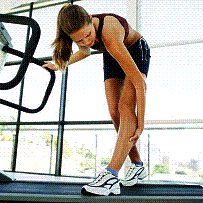 I’m sure you’ve heard of the saying “no pain, no gain.” Well, one way or the other, you will always experience pain however, it doesn’t mean that you have to endure a great deal of it in order to progress much faster towards your goal. If you don’t know why you feel this pain within 24 hours of exercising, it’s due to a sensation called Delayed Onset Muscle Soreness (DOMS). Your muscle fibers get injured as a result of excessive exercising.
I’m sure you’ve heard of the saying “no pain, no gain.” Well, one way or the other, you will always experience pain however, it doesn’t mean that you have to endure a great deal of it in order to progress much faster towards your goal. If you don’t know why you feel this pain within 24 hours of exercising, it’s due to a sensation called Delayed Onset Muscle Soreness (DOMS). Your muscle fibers get injured as a result of excessive exercising.
“Good pain” is still pain and can interfere with our everyday activities. Often times, we forget the simplest of methods in alleviating body pain before, during, and after our workout. I am no exception to this as well. Let’s remind ourselves of some of these methods shall we?
Proper Hydration
Drinking water should come naturally for us. What most people don’t realize, however, is that you need to drink more than the usual daily recommended amount. Dehydration is a definite no-no. Personally, I drink around 500-700ml. of water for every hour of exercise / workout that I do daily. A simple indication that you are well-hydrated after you exercise is if your urine, within a few hours after your workout, is light yellow or clear. What about drinking sports drinks you ask? Well, at times, I drink both actually but if you ask me which is better, that’s another topic for another time.
“Refuel” with Nutrients
Yet another commonly ignored method in reducing muscle pain and soreness. After your workout, it is important to replenish your energy with enough carbohydrate energy in preparation for your next workout. You need to ingest enough protein in order to repair your muscles. Try a protein shake or smoothie and/or chicken with brown rice then top it off with a piece of fruit.
“Cool Down” after your workout
Just as it is important to warm-up your body before subjecting it to an extreme workout, it is equally important to cool it down. You’ll want to remove inflammatory fluids in your muscles as well as sore or tight spots from the muscles you worked out. Just do some light exercises before wrapping up and then get a massage every now and then. Who doesn’t want to have a massage, right?
Apply Topical Ointments
These are just what the doctor ordered. These ointments are developed to create a cooling, pain-relieving sensation and also increase blood flow. Tiger balm and Ben-Gay are a couple of the ointments that I’ve used and would recommend.
As mentioned earlier, if you feel pain after your workout, that’s normal. It’s the excessive pain which is troublesome. This can happen if you increased the intensity of your exercise too quickly or if your body didn’t recover properly. Just recall these simple methods that I mentioned (feel free to follow whatever else you’ve found out to be effective) and I’m sure your body will adjust to the pain in due time.
Author Bio:
 Dr. Todd Luther works at Align Integrative Health in Washington. He comes from a family of health care practitioners including a medical doctor, OB Nurse and Nurse Midwife. Practicing since 2005, Dr. Luther is confident in providing the correct diagnosis, treating your problem or referring to the correct specialist.
Dr. Todd Luther works at Align Integrative Health in Washington. He comes from a family of health care practitioners including a medical doctor, OB Nurse and Nurse Midwife. Practicing since 2005, Dr. Luther is confident in providing the correct diagnosis, treating your problem or referring to the correct specialist.